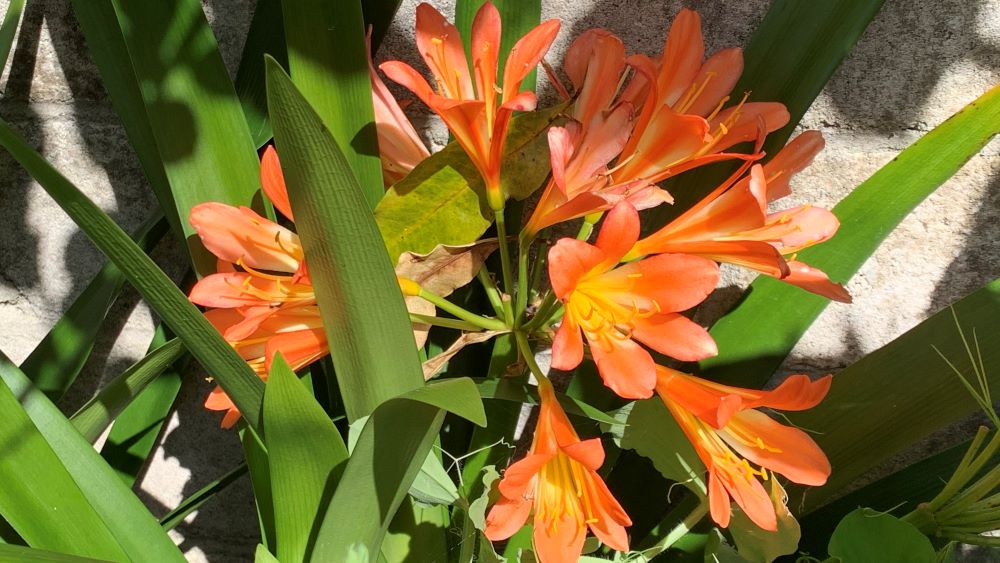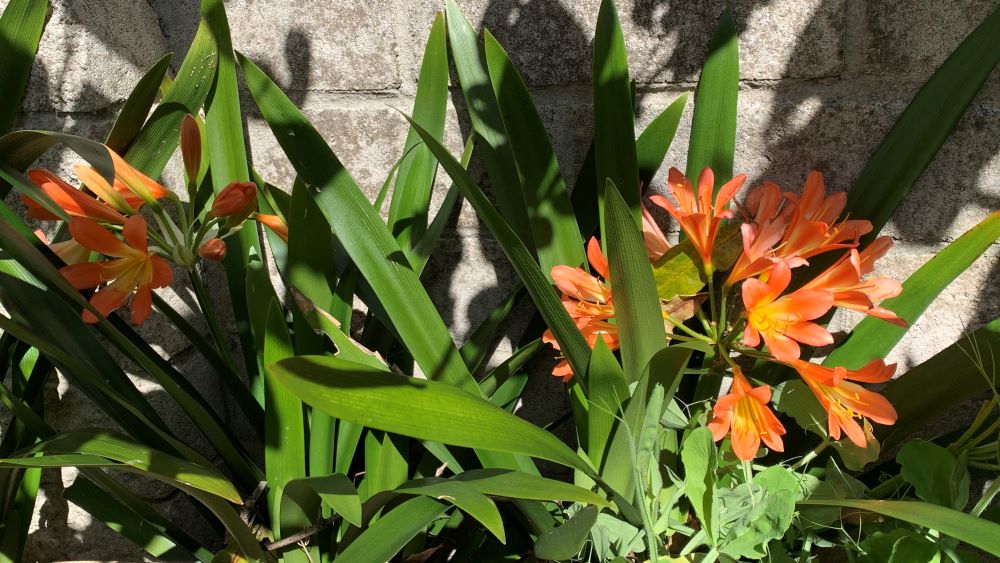After clivia plants have finished flowering it is time to trim off the old flower heads and remove any old leaves. Clivia plants will produce most of their flowers over the fall and winter months. When the flowers have dried and wilted, snip them off near the base of the plant to keep it looking tidy over the summer season.
This article will explore the best ways to care for clivia plants after they have finished flowering. This includes how to prune, feed water and divide the plant.
Clivia plants are easy to care for, shade loving plants that traditionally produce large orange or red flowers. There are new varieties now that will grow yellow, cream and pink flowers. Pruning them correctly will make sure that you get flowers the next season and large, healthy plants.

How to prune clivia plants after flowering
Prune clivia plants after the flowers has finished and started to wilt. Deadhead the flowers by trimming them off near the base of the plant with sharp secateurs. This will keep the plant looking neat.
You can prune the flowers off as soon as they start to wilt, before they produce seeds. This will allow the plant to use more of its energy to grow healthy stems and more flowers rather than to produce seeds.
The next step is to remove any damaged or old outer leaves. Clivia plant will naturally replace the outer leaves as they grow with new ones from the center. Trim off the outer leaves close to the base removing any that are torn, yellowing or brown.
The clivia flowers and leaves can be placed in your compost if they are not affected by fungal growth or disease. They will break down quickly and turn into great compost for your garden.

How to feed clivia plants after flowering
Feeding outdoor clivia plants with pelleted chicken manure at the start of spring. Water this in well with seaweed solution to help to strengthen their root growth. Indoor clivia plants can be fertilized with a general all purpose indoor plant food at the start of spring and before flowering at the start of fall.
Avoid adding fertilizer to the plant during winter to encourage them to produce lots of flowers in spring. Too much nitrogen can cause the plant to grow lots of green leaves but no flowers. If this is happening for your plant, give it a dose of fruit and bloom promoting fertilizer.
This will reduce the nitrogen to phosphorus to potassium ratio which will encourage the plant to flower.
Watering clivia plants after flowering
Clivia plants will produce large and healthy flowers if they get consistent water over the fall and winter months. When the plant has finished flowering in spring, it is time to trim off old flowers and deep water the plant.
Shade loving clivias will grow well over spring and summer if they are consistently watered or get good rainfall. Outdoor clivia plants grown in tropical regions can survive on rainfall alone during a good season.
I like to water my clivia plants if rainfall is low each week to make sure they grow well over summer. Clivias grow from rhizomes which will store water for the plant and help them to survive short dry spells.

How to divide clivia plants after flowering
After clivia plants have finished flowering in spring, you can lift and divide large clumps. This will give you more plants for free and help to give the original plant more room to grow and flower. You can also do this in fall just prior to flowering.
To divide clivia plants take a sharp spade and dig a circle around the whole plant, gently lifting at the same time. The whole clump can be lifted out of the ground keeping the roots undamaged.
Clivia plants will send shoots off from the main rhizome which can be separated and grown into new plants.

Gently pull apart the clivia stems and snip off the piece from the main rhizome. Make sure the stem is healthy and has plenty of roots so it can grow on its own.
How to get more flowers on clivias
Here are 3 easy tips to get more flowers on clivia plants. These tips will help to keep plants healthy and allow them to produce large, colorful blooms throughout the cooler months.
1. Protect clivias from afternoon sun
Positioning is important to protect clivia leaves from the hot summer sun. Plant them under a tree or near shrubs or structures that allow some morning filtered light and protection from the afternoon sun.
Leaves can be burnt by the sun, turning yellow and brown. This leaf damage can slow growth and may stop the plant from growing flowers.
2. Plant clivias in well-draining soil
Clivias are not fussy plant but will grow the most flowers if they are planted in well-draining soil. Before planting them outside, improve the soil with aged cow manure and compost. This will help the soil to drain well and allow the clivia roots to reach out and grow strong.
3. Grow clivias in pots if you have tough conditions
A great way to get the best position for clivias throughout the season is to plant them in pots. If you get very hot summers, they can be moved into a shady position and brought out in fall and winter when they are ready to bloom.
Plant them in a pot with a good quality, all-purpose potting mix and remember to keep them watered well when it is warm. Potted plants can be protected from the harsh summer sun and moved into a prominent position when they are in bloom for everyone to see.
What to do with Clivia Plants after Flowering | Summary
Clivia plants will produce masses of bright flowers over the winter months brightening up your garden. After the flowers have finished and they have started to dry up trim them off near the base of the plant. Feed the plant in spring to keep it growing strong and prepare it for more flowers by next fall.
Clivias are a hardy, easy care plant, just remember to protect them from the harsh afternoon sun.
Happy growing.
Clivias
- Orange flowering clivia leaves turning yellow | Top 5 Causes and Solutions
- Are clivia roots invasive? | Should you plant them near your house?
- Best fertilizer for Clivia Plants | Winter, Spring and Summer
- Do clivias multiply? | How to get more clivias for FREE
- Yellow leaves on Clivias | Problem solved
- What to do with Clivia Plants after Flowering | Easy Pruning Tips
- Sunburnt Clivias | 5 Ways to Help Plants Recover
- Why Clivias Stop Flowering | How to Encourage More Blooms
I am an accredited practicing dietitian, experienced gardener and a dedicated cook. I love writing and sharing my experience so you can learn from my successes and mistakes.
